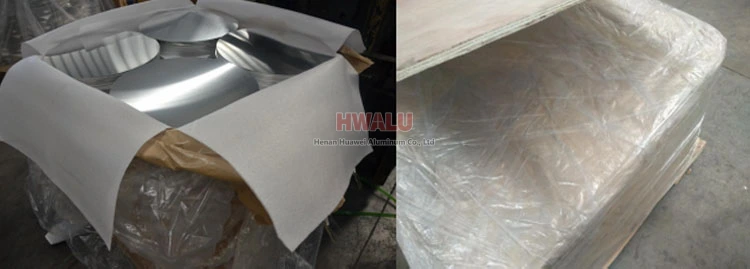1. Bottom
Wooden trays can’t have bark eyes or mildew.
If the top of the pallet is a wooden strip, it needs to be padded with a cardboard or wooden board, then a layer of plastic sheeting, then a layer of waterproof kraft paper, and finally a layer of pearl cotton (contacting the aluminum disc).
(The size of the cardboard is the same as that of the tray, and the bottom EPE, waterproof kraft paper, and plastic sheet wrap the aluminum circle and fold it along the sidewall to ensure that the aluminum circle is not exposed).
2. Side
Close to the aluminum disc is a layer of pearl cotton, followed by a layer of waterproof kraft paper, and a layer of plastic cloth on the outside.
(Requires complete encapsulation of the aluminum disc and a good seal on top).

3. Internal
Add paper space between aluminum discs, put cardboard space between each stack, and put enough desiccant.

4. Exterior and top
On the outermost side, wrap a layer of kraft paper around the edges, seal the port with tape, and stretch it with wrapping film.
Add a layer of wood to the top of the well-sealed package, the size of which is the same as the bottom tray.
5. Steel belt
Finally, the outside of the package is marked with a tic-tac-toe steel belt. Cardboard corner guards are required at the corners of the packaging. See below.
Along the direction of the dunnage, the steel belt is punched twice on the dunnage and on the inside of the dunnage. Then make two more strokes along its vertical direction.

6. Neutral labels
Easy to replace later.
